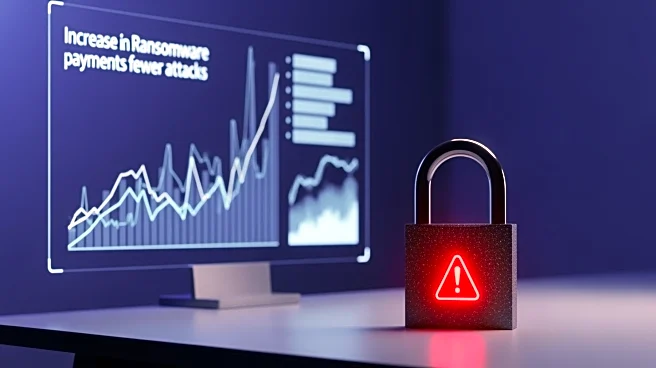What's Happening?
Vidar Stealer 2.0, a new version of the popular malware-as-a-service (MaaS), has been released with significant updates, according to a technical analysis by Trend Micro. The malware, which has been active since 2018, is known for stealing sensitive information
such as passwords. The latest version has been completely rewritten in C, featuring a new multithreading system that allows it to process data from multiple sources simultaneously. This update increases the malware's efficiency and reduces the time window for detection. Additionally, Vidar Stealer 2.0 includes a polymorphic builder to generate unique binary signatures, making it harder for static analysis tools to detect. The malware also employs control flow flattening to obfuscate its execution path, complicating reverse engineering efforts. A new technique for browser credential extraction has been introduced, bypassing encryption features in browsers like Google Chrome by extracting keys directly from active memory.
Why It's Important?
The release of Vidar Stealer 2.0 poses a significant threat to cybersecurity, particularly for organizations that rely on static analysis tools for malware detection. The enhanced features of this malware increase its stealth and effectiveness, making it a formidable tool for cybercriminals. With the decline of other infostealers like LummaC2, Vidar Stealer 2.0 is likely to see increased use, as indicated by a spike in activity following its release. This development underscores the need for organizations to strengthen their cybersecurity measures, including updating endpoint solutions and enforcing robust credential management policies. The ability of Vidar Stealer 2.0 to bypass browser encryption features also highlights the importance of user education in preventing credential theft.
What's Next?
As Vidar Stealer 2.0 gains traction among cybercriminals, security teams are expected to face increased challenges in detecting and mitigating its impact. Organizations must prioritize early detection and response strategies to combat this evolving threat. The cybersecurity community may also see a push for more advanced detection tools that can handle the polymorphic and obfuscation techniques employed by Vidar Stealer 2.0. Additionally, there may be increased collaboration between cybersecurity firms and law enforcement to address the growing threat posed by malware-as-a-service platforms.













